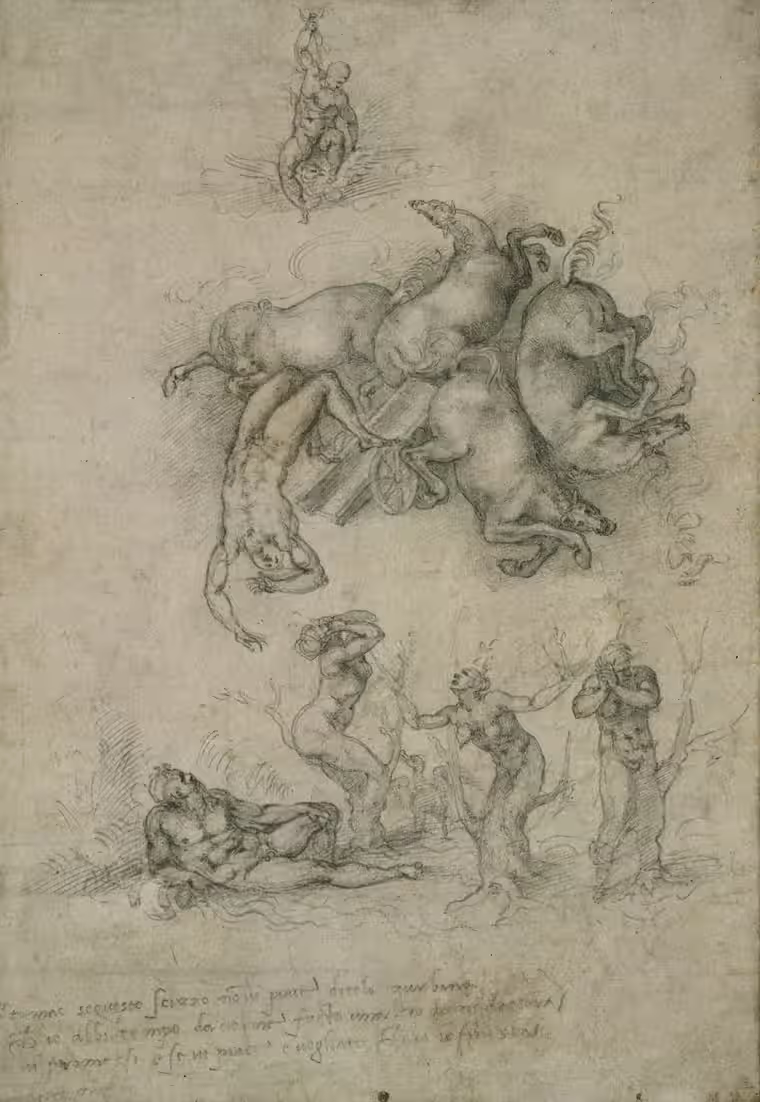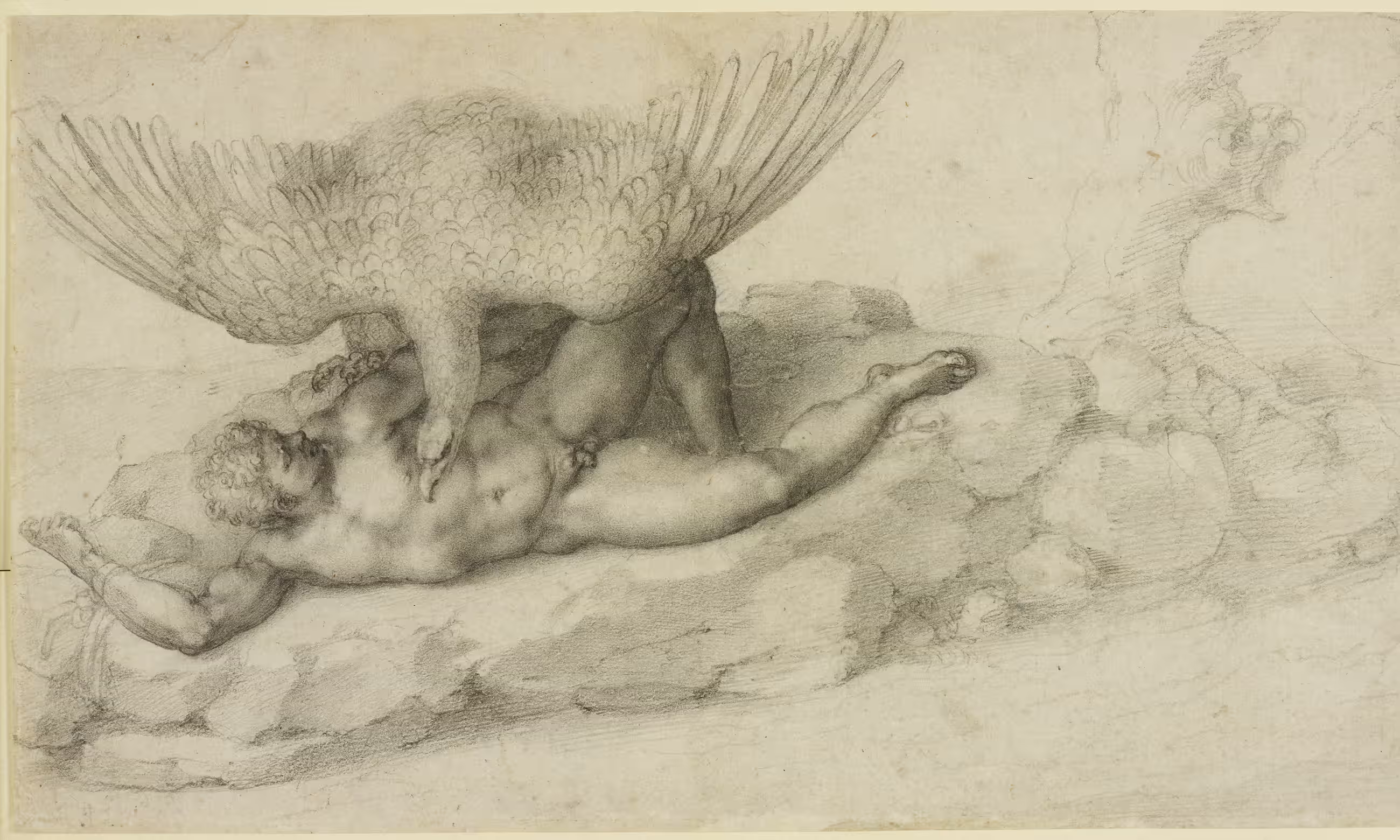Tommaso de’ Cavalieri was the light of the age, unique in the world – at least in the eyes of the man who loved him. That ardent lover was Michelangelo, who described Cavalieri in these glowing words in a letter from 1532. If only a portrait of Tommaso survived we could have seen his face, which the fiftysomething artist claimed in a poem was so beautiful it gave him a glimpse of paradise itself.

Michelangelo’s The Fall of Phaeton. Photograph: The Trustees of the British Museum
That may not be instantly obvious when you look at Michelangelo’s The Fall of Phaeton, from the BM’s own Michelangelo collection. It illustrates a Greek myth, retold by the Roman poet Ovid, of the overconfident youth Phaeton who has borrowed the flying chariot in which his father, the sun god, crosses the sky from dawn to dusk. He’s lost control of the horses so Jupiter, to stop his fiery chariot from burning the earth to a crisp, has struck him down. This is a sculptor’s drawing. You can feel the dead weight of the horses, their blunt mass, as they plummet. Phaeton’s naked upturned body dangles in freefall. On the ground, already in mourning for the doomed youth, his sisters are metamorphosing into poplar trees. There’s a male mourner, too: Cycnus who, as Ovid tells it, loved him and was devastated by his death. In his grief, he transformed into a swan. And it is as a swan that Michelangelo portrays this bereft lover.

‘Pleasure in this pain’ … Michelangelo’s The Punishment of Tityus. Photograph: Royal Collection Trust/© His Majesty King Charles III 2024


